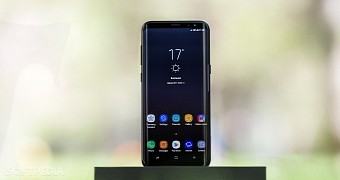The US version of the Samsung Galaxy S8 that’s powered by the Snapdragon 835 chip can finally be rooted thanks to a third-party tool that’s specifically aimed at the Plus model, but which also works on the smaller sibling.
Called SamPWND and posted on XDA, the root tool is primarily aimed at the Samsung Galaxy S8+ models G955U and G955U1, but it can also be used on the Galaxy S8 models G950U and G950U1.
If you’ve rooted Android phones before, doing this on a Samsung Galaxy S8 is not rocket science, and it all comes down to a series of steps that you need to follow and which are detailed on the page linked above.
“The process will be broken into two parts. The first part is to have a somewhat working root on the ENG system.img. A lot of apps will work but apps like FF will have issues and other apps will not function such as Adaway so you are going to want to most likely follow the second process also. The second process will essentially use FF to flash the Stock System.img with root. This end goal the root works beautifully and I have never experienced my S8 Plus run any better!” one of the contributors to the project explains.
Charging only to 80 percent
What’s important to know is that using SamPWND to root a Samsung Galaxy S8 won’t trip KNOX, which means that you’re not going to lose your warranty, so with a quick flash you can bring the software on your smartphone in brand-new condition. On the other hand, this rooting tool does not unlock the bootloader, though it’s probably just a matter of time until an app for this thing is being developed as well.
Also, it’s worth knowing that after the root, devices only charge to 80 percent, but this happens because the root tool is exploit-based and Samsung specifically implemented this limitation for permissive boots. Future updates to the root tool could address this restriction though.
As with any other rooting tool, you should make sure that you follow each step in the tutorial because nobody is responsible should you brick your phone. This risk does exist, so if you don’t know what you’re doing, you better stay away from it.

 14 DAY TRIAL //
14 DAY TRIAL //